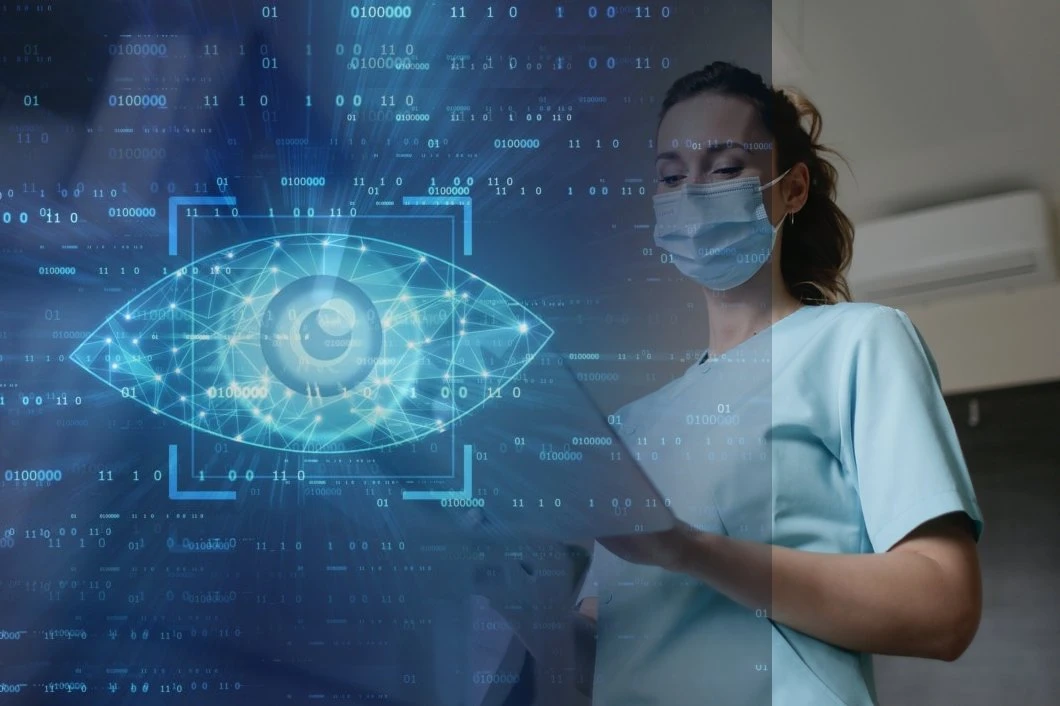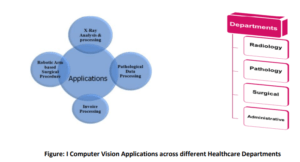
Abstract
The emergence of the pandemic which first surfaced in the early part of 2020, has not only created havoc throughout the world in terms of untoward incidents but also forced some quantum changes in the mindset pertaining to the Healthcare domain. The traditional mindset and operational measures to accomplish various healthcare tasks have gone through a substantial paradigm shift and with acceptable reasons. If the entire geography of ours is divided into two major segments viz-a-viz Western & Eastern World, we would find that the schools of thought related to the best practices in healthcare also would be of different nature. The Western World has long accepted and invested in the rapid development for the use of Computer Vision Algorithms in primary and secondary point of care facilities but the Eastern World’s acceptance rate has always been slow but steady. The Eastern counterpart is more concerned to establish a concrete Proof of Concept before finally rolling them out in actual practice. The onset of the pandemic has forced everyone to bring in some of the necessary changes which otherwise would have been a distant affair. The focus has hence been shifted from hard core research practices to valued added research leading to product development. In this particular blog series, I would be focussing on some of the applications from implementation, from the OpenCV perspective which is here to stay beyond this pandemic catastrophe as well. The core of the discussion would pivot around some of the different applications that can be catered by OpenCV.
Though the tool basket for OpenCV is a little bigger and it addresses a broader spectrum of applications but in the interest from the topic perspective, the series of articles would only present a small subset from various healthcare applications. Hence, in a nut shell over the next four papers, the documents would be presented by beginning with a gentle introduction, and then in some of the. The following sections, would touch base on the specific applications across departments that have made the departments get inclined towards adopting this new avatar from an operations and functional perspectives.
Introduction
OpenCV is an open-source library package from Python which can be leveraged to address some of the applications related to image processing and computer vision. OpenCV offers a plethora of algorithms catering to specific image processing tasks. They can range from simple contour / edge detection, morphological applications, image segmentation, geometric transformation, feature extraction, image registration to even image restoration kind of tasks. A little more thought and a deep delve would help us to understand the bandwidth, the package can cover when it comes to the Healthcare domain in particular. Healthcare is a very sensitive domain and any applications hinging around needs to be taken care with a very high precision and intricacy. A snippet from any Point of Care facility offering Medical & Para-Medical services broadly covers the following departments and their various day to day activities have also been jotted below in Figure I

The various applications and its corresponding departments have been summarized in the info graph given above. As we would progress through this entire series, we would learn about some of the roadblocks omnipresent in these applications and their algorithmic way out.
The entire Blog Series is divided into four episodes. This five-episode blog series would give anyone a thorough overview of each episode, scope and use of algorithms, success rate & present challenges, brief description of pros & cons and the roadmap for future or the future directions of such an implementation.
Each subsequent blog would be explained with illustrative case studies /example for easement of understanding and would lead to pictorial representation of the solution in a seamless manner. The respective episodes and its use in various medical departments have been laid out as given below.
(I) X-Ray Processing & Analysis in Radiology Department.
(II) Histology Data Processing & Analysis in Pathology Department.
(III) Robotic Arm focussed localization & Tumour Removal in Surgical Department.
(IV) Automated Invoice Processing in the Administrative Department.
Episode – I to Episode – IV would be covered in full in-depth detail addressing the vivid use of the algorithms to cater to the specific case study in question. Furthermore, the introduction to these episodes would be presented in a precise manner starting from the broader overview from the application perspective, and would slowly touch base on the various nitty-gritty as the discussion and/or the write-up would start taking some shape. This would help the readers to understand and relate to the problem in a more intrinsic manner. The objective of this particular series would help them to refer to these subsets of problems for some of their futuristic applications, particularly in the Bio-medical space. The concluding part of the individual episodes would leave the readers with food for thought which can act as a feed to their capstone projects as well.

Author Biography: DEBAJIT SEN has close to 12 years experience in the field of Robotic Process Automation, Artificial Intelligence & Data Science, Machine & Deep Learning, Signal & Image Processing, and Computer Vision applications. He has implemented numerous projects in the space of Manufacturing, Security & Surveillance, and Biomedical & Healthcare Domain. Currently working as a Data Scientist in a Healthcare Organization. Presently,
working on the development of RPA-based Intelligent Content Processing (OCR & NLP based) for Healthcare Insurance Analytics. He has also published numerous papers in various National & International Journals, Conferences of repute & also has an International Innovation Patent Grant from the Australian Government (IP Australia) to his name for novel work in the domain of medical science.


